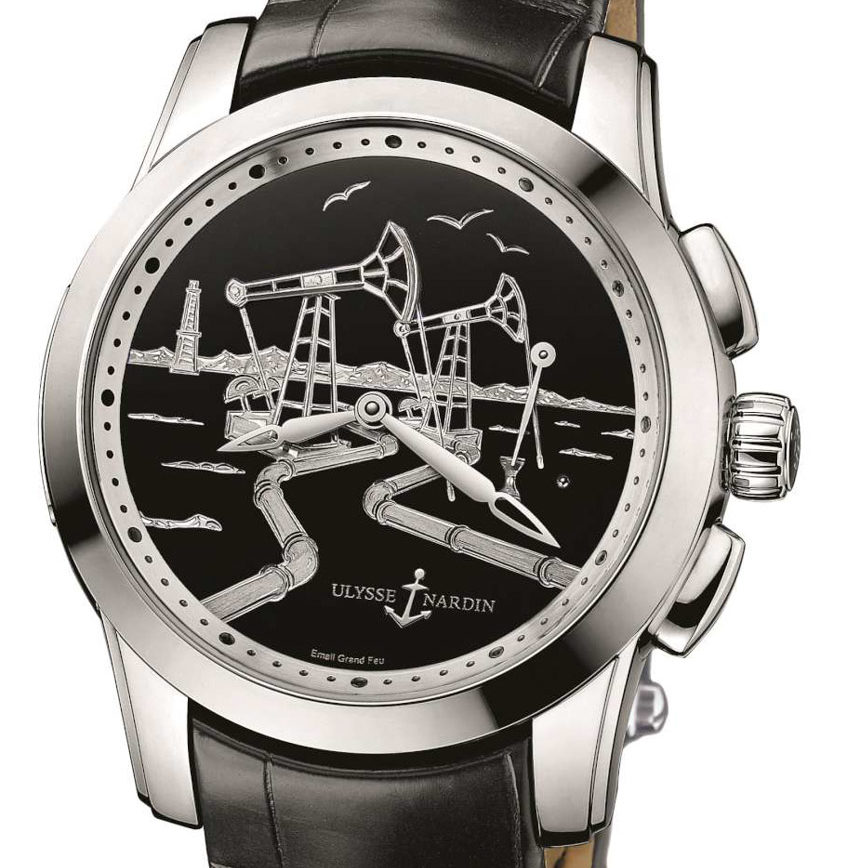 Written by guest contributor David Vaucher who is a watch enthusiast and Director in the Energy Practice at Alvarez & Marsal (A&M) in Houston, Texas.
Written by guest contributor David Vaucher who is a watch enthusiast and Director in the Energy Practice at Alvarez & Marsal (A&M) in Houston, Texas.
The Swiss watch industry just recently entered its deepest slump in years. This is certainly preoccupying the minds of executives of companies both large and small, and with equal certainty I can say that change – for both the industry and you the consumer – is coming. Though it’s difficult to say is exactly what that change will be, I’m going to attempt exactly that by looking at another business that has been struggling with its own bust for several years now: the oil and gas industry. My working hours are occupied as a management consultant to energy companies, and though it may not immediately seem so, the two industries do share some history.

My “thesis” is as follows: if we can establish some of the linkages between the two industries, then look at how events have unfolded for companies here in Houston (the oil and gas capital of the world), we will be able to formulate some educated hypotheses concerning what changes may be in store for companies in the world’s horological capitals. I believe strongly in the importance of data, so I will be supporting my thoughts where applicable and possible with analysis I have performed on publicly available figures from the Swiss Watch Federation.

A shared history of booms and busts
Anyone vaguely familiar with the watch industry knows of the “Quartz Crisis,” but what you may not know is that it happened nearly alongside the oil and gas industry’s last great crash!
While the Quartz Crisis and the oil price crash of 1983 could be seen as purely coincidental to each other, I’m highly inclined to believe the recoveries and recent declines of both industries are closely related. After all, when you are a wealthy Middle Eastern oil producer, or a newly minted Chinese billionaire industrialist, a watch (or three or four) is a great way to announce that you’re doing well. When the economy and oil prices fall, appetites and available funds for expensive timepieces follow.
The situation now in 2016 shows inventories for both oil and watches accumulating and the major players in both industries brace for the reckoning while simultaneously trying to chart a course forward. The oil and gas industry’s “head start” in dealing with a paradigm shift gives an indication of what that reckoning will look like for the Swiss watch industry.

There will be a “new normal” for pricing
The most immediate indicator of how each respective industry is doing is the unit price, be that the price for a barrel of oil or that of a Swiss watch. It wasn’t long ago that Saudi Arabia said $100 per barrel was the “fair price” for oil. That sounds a bit like the watch industry becoming blasé about selling a five-figure timepiece, doesn’t it?
Today, Saudi Arabia is still producing oil at around $45 per barrel, and I believe the Swiss watch industry will find itself in a similar situation with price adjustment. Believe it or not, the barriers to starting a (small) drilling company are not that high, and when oil was over $100 per barrel, there was plenty of capital and eager investors around to help people achieve their dreams of striking black gold. This led to a glut of product, which led to a collapse in prices.
I sense what you’re thinking: “oil is a pure commodity, and Swiss watches are not.” While that’s true, there are factors in play that may move the industry in the same direction. As Ariel mentioned just recently, the barriers to entry into the watch industry are also low. There is little doubt that many watch companies formed in the last few years did so on the premise that “a rising tide will lift all boats” – reasoning that because prices were rising for the established brands (Rolex, Patek Philippe, etc.), they could simply encase an ETA 2824 and charge thousands.

These watches are all nominally different, but once even novice consumers become more savvy with the access to information provided by the internet, all the “new” models cease to appear unique. I believe you see a similar trend at the top end of the price bracket as well: sure, every “manufacture” makes their own tourbillon, but when everyone has a tourbillon, is it such a special feature?
You again end up with perceived commoditization, and as soon as one company is willing to sell that commodity for less than the rest of the group, the price floor shifts down for the entire market. Eventually, the market reacts, but there’s always a lag time between the market movement and the supply-side reaction, and that has manifested itself as excess inventories. We see that with rising inventories of oil, and again, as Ariel mentioned recently, we see that with a surplus of watches sold at a discount through the grey market.

“Five-Figure Fatigue” has been setting in amongst watch consumers, and it seemed to come to a head at this year’s Baselworld, with several brands offering features once reserved for near-six-figure watches at much lower prices such as TAG Heuer’s chronograph tourbillon and Frédérique Constant’s perpetual calendar. That softening in prices is poised to have a very measurable impact on Swiss watch producers, and again, we can turn to the oil and gas industry to assess what that impact might look like.

Not every brand will emerge from a Swiss watch industry slump
In the boom times of the oil and gas industry, many companies looked to cash in by growing with large amounts of debt. Now, revenues have been slashed, creditors want their money back, and these indebted firms are having to cut costs, sell off assets, or even shut down completely.
Ask yourself: is what I’ve just described that different from a watch company looking to build its legitimacy at a time of surging watch sales by investing millions to build its own movements or otherwise increase manufacturing capacity? You might tell yourself that developing a movement is reserved only for the largest players, and surely they would have the funds to weather an industry shift.
Perhaps, but here again we can draw another parallel with the oil and gas industry. Those same small oil companies that jumped in and helped create the glut of oil could only exist when oil prices stayed high. Without the cash reserves of the larger players, these companies had little hope of surviving once oil prices dropped.
Similarly, if demand for Swiss watches cools and/or consumers become savvier, the watch companies that either sprang up during the boom – or even the established brands that don’t have the backing of a large conglomerate – become more vulnerable. The question then becomes: do these companies simply cease to exist, or do they carry on in another form?
This leads to another trend we’ve already seen happening in oil and gas, that of partnerships, mergers, and acquisitions.
